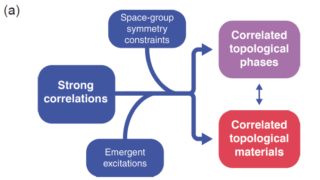
Engineering the orbital character of the electronic structure of superconducting cuprates
Yttrium barium copper oxide (YBCO) is a family of crystalline chemical compounds that display high-temperature superconductivity; it includes the first material ever discovered to become superconducting above the boiling point of liquid nitrogen (77 K) at about 93 K. This family is known as cuprates as it can be viewed as containing anionic copper complexes […]








